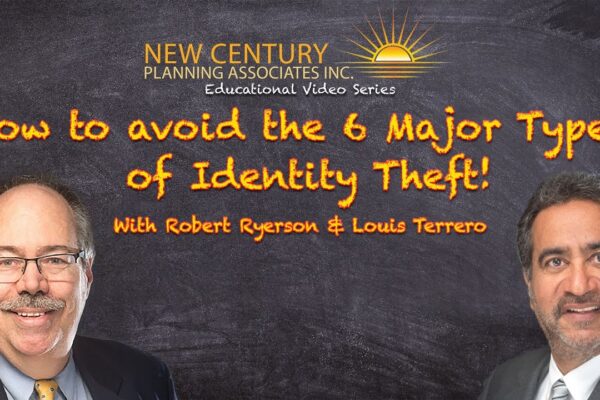A Helpful Cryptocurrency Glossary That’s Great for Beginners
I recently did a webinar with a colleague on the subject of learning about Bitcoin and cryptos.
An Introduction to Crypto-Currencies
Hosted by Robert Ryerson, Dr. Jose Cao Alvira, Nikki Shank.
Thursday, March 25 2021.
6:00 PM Eastern Time (US and Canada) GMT -4.
We have recorded the webinar event for you!
In case you missed the live webinar, or in case you would like to watch it again, here is the link to the replay video:
Replay video: https://event.webinarjam.com/t/click/8vvxphpwh57uvmtv46s54smwio
Room password: N/A
Enjoy the content!
A Helpful Cryptocurrency Glossary That’s Great for Beginners
If you’re thinking about investing in cryptocurrencies, familiarizing yourself with the industry’s most common terms is a helpful first step to take. The world of digital currencies is full of highly specialized terms, acronyms, and phrases that can be confusing to a prospective investor encountering them for the first time. Taking the time to learn the basic vocabulary helps give you a better understanding of what cryptocurrencies are and, therefore, a more secure foothold as you enter this exciting and fast-moving market.
The following are some of most useful cryptocurrency terms with which to start:
Address – An address is a specific code, represented as a string of numbers and letters, that identifies the location of every cryptocurrency coin on the blockchain. When cryptocurrency transactions take place, digital assets are sent to and from different addresses.
All Time High (ATH) – As the expression suggests, all time high (ATH) is the term for the highest price a particular cryptocurrency has ever reached on the market. If you’re interested in tracking the performance of different cryptocurrencies, comparing the ATH against the current price can give you a sense of whether a digital asset is a good buy at any given moment.
Altcoin – Also known as alternative coins, or simply alts, altcoin refers to any type of cryptocurrency other than Bitcoin. According to some estimates, there are currently close to 9,000 different altcoins in existence, and altcoins accounted for more than 40 percent of the total cryptocurrency market in March 2021.
Bag – In the cryptocurrency world, the term “bag” is essentially the equivalent of “portfolio” in that it refers to the full collection of digital assets that you hold.
Bitcoin – Launched in 2009, Bitcoin is the original cryptocurrency and still the most popular digital currency in the world.
 Blockchain – The driving force that powers virtually every type of cryptocurrency, blockchain is a trail of verified digital transactions that have been linked together. Functionally, blockchain acts as a kind of virtual accounting ledger in which publicly viewable transactions are stored in multiple secure places.
Blockchain – The driving force that powers virtually every type of cryptocurrency, blockchain is a trail of verified digital transactions that have been linked together. Functionally, blockchain acts as a kind of virtual accounting ledger in which publicly viewable transactions are stored in multiple secure places.
Cryptocurrency – Money that exists in the form of encrypted, digital information. The most important thing to understand about cryptocurrency is that it is completely independent of banks or other traditional financial institutions and uses sophisticated mathematics to process and regulate how funds are created and exchanged.
Cryptography – The process of encoding and decoding information to keep it private and secure.
Distributed – This refers to the practice of spreading something out in different places or among different devices rather than keeping it in a single location. One term you’ll hear frequently in a cryptocurrency context is “distributed ledger,” which refers to the fact that the blockchain is essentially a shared database where transactions and related details are recorded in multiple places at the same time. The idea behind distributed-ledger technology is that, because there are many identical copies of the ledger in existence, the information it stores is far more secure and virtually impossible to counterfeit.
Exchange – One of the more easily identifiable terms found in the cryptocurrency world, an exchange is a marketplace where traders can buy, sell, and trade digital assets. Many different exchanges exist, each with its own rules around trading fees, exchange rates, and other key features. Note that it’s not usually possible to trade any type of cryptocurrency on any exchange; some exchanges only trade in a selection of cryptocurrencies.
Fiat Currency – Fiat currencies are what most people think of as “real money.” In other words, a fiat currency is any type of government-issued currency that a specific nation or region uses as legal tender, such as the U.S. dollar or the euro.
Mining – The term mining refers to the process of creating new units of a digital currency by verifying digital transactions and adding them to the blockchain. Another way to describe mining is the act of running software that solves cryptographic puzzles in order to obtain rewards in the form of digital currency.
Node – Any computer that hosts the blockchain is known as a node. Having many nodes running the blockchain is an essential part of its distributed-ledger technology.
Satoshis (Sats) – A satoshi is the term for the smallest fraction of a Bitcoin: one-hundred-millionths. The name comes from Satoshi Nakamoto, the pseudonym by which the person or group that created Bitcoin is widely known.
Token – Tokens are digital units issued on a blockchain. They are the primary means of transferring and storing value on the blockchain network.
Wallet – In the world of cryptocurrency, a wallet is the software that interacts with the blockchain and allows you to send or receive digital assets. Wallets can be either hot, which means they are connected to the Internet, or cold, in which case they are not connected (cold wallets are usually considered to be the most secure way to store cryptocurrency assets).
Author






